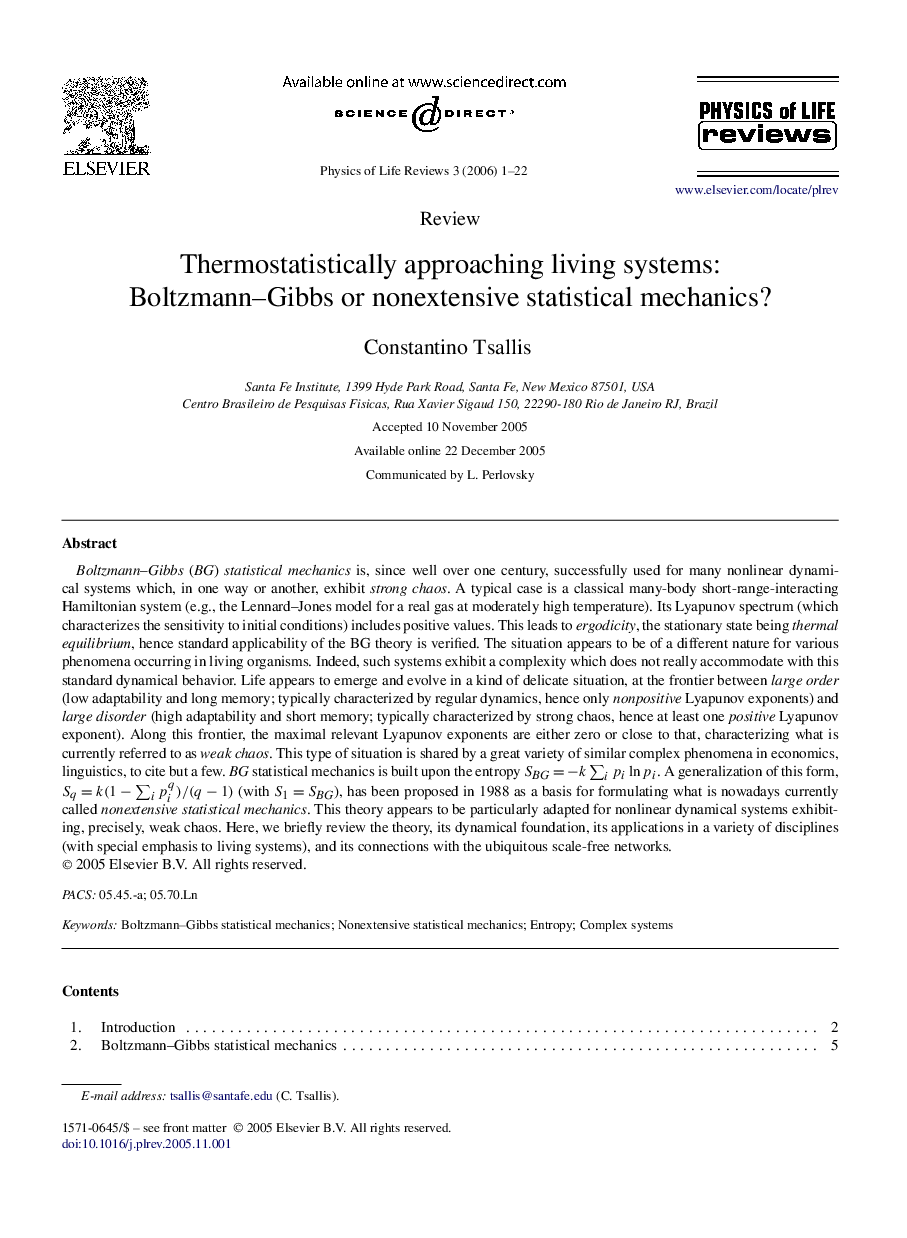| Article ID | Journal | Published Year | Pages | File Type |
|---|---|---|---|---|
| 1873107 | Physics of Life Reviews | 2006 | 22 Pages |
Boltzmann–Gibbs (BG) statistical mechanics is, since well over one century, successfully used for many nonlinear dynamical systems which, in one way or another, exhibit strong chaos. A typical case is a classical many-body short-range-interacting Hamiltonian system (e.g., the Lennard–Jones model for a real gas at moderately high temperature). Its Lyapunov spectrum (which characterizes the sensitivity to initial conditions) includes positive values. This leads to ergodicity, the stationary state being thermal equilibrium, hence standard applicability of the BG theory is verified. The situation appears to be of a different nature for various phenomena occurring in living organisms. Indeed, such systems exhibit a complexity which does not really accommodate with this standard dynamical behavior. Life appears to emerge and evolve in a kind of delicate situation, at the frontier between large order (low adaptability and long memory; typically characterized by regular dynamics, hence only nonpositive Lyapunov exponents) and large disorder (high adaptability and short memory; typically characterized by strong chaos, hence at least one positive Lyapunov exponent). Along this frontier, the maximal relevant Lyapunov exponents are either zero or close to that, characterizing what is currently referred to as weak chaos. This type of situation is shared by a great variety of similar complex phenomena in economics, linguistics, to cite but a few. BG statistical mechanics is built upon the entropy SBG=−k∑ipilnpiSBG=−k∑ipilnpi. A generalization of this form, Sq=k(1−∑ipiq)/(q−1) (with S1=SBGS1=SBG), has been proposed in 1988 as a basis for formulating what is nowadays currently called nonextensive statistical mechanics. This theory appears to be particularly adapted for nonlinear dynamical systems exhibiting, precisely, weak chaos. Here, we briefly review the theory, its dynamical foundation, its applications in a variety of disciplines (with special emphasis to living systems), and its connections with the ubiquitous scale-free networks.
